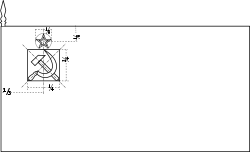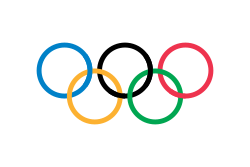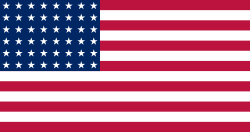Kósuke Kitadžima
| Kósuke Kitadžima | |
|---|---|
 | |
| Narození | 22. září 1982 (42 let) Tokio |
| Alma mater | Japonská tělovýchovná univerzita |
| Povolání | plavec |
| Ocenění | Medaile cti s fialovou stuhou (2003, 2004 a 2008) |
| Choť | Chisa |
| Některá data mohou pocházet z datové položky. | |
| Přehled medailí | ||
|---|---|---|
| zlato | LOH 2004 | 100 m prsa |
| zlato | LOH 2004 | 200 m prsa |
| zlato | LOH 2008 | 100 m prsa |
| zlato | LOH 2008 | 200 m prsa |
| Mistrovství světa v plavání | ||
| zlato | MS 2003 | 100 m prsa |
| zlato | MS 2003 | 200 m prsa |
| zlato | MS 2007 | 200 m prsa |
Kósuke Kitadžima, japonsky 北島 康介 (* 22. září 1982, Tokio) je japonský plavec. Je držitelem čtyř zlatých olympijských medailí, dvě vybojoval na olympijských hrách v Athénách roku 2004, a to ve sprintu na 100 a 200 metrů prsa. Ve stejných disciplínách pak triumfoval i za čtyři roky na olympiádě v Pekingu. Krom toho má jedno stříbro (Londýn 2012) a dva bronzy (Athény 2004, Peking 2008) ze štafet na 4 × 100 metrů.[1] Je též trojnásobným mistrem světa.[2]
Reference
- ↑ Kosuke Kitajima Bio, Stats, and Results. Olympics at Sports-Reference.com [online]. [cit. 2019-03-05]. Dostupné v archivu pořízeném dne 2008-08-20. (anglicky)
- ↑ FACTBOX: Gold medalist Kosuke Kitajima. Reuters. 2008-08-14. Dostupné online [cit. 2019-03-05]. (anglicky)
Externí odkazy
 Obrázky, zvuky či videa k tématu Kósuke Kitadžima na Wikimedia Commons
Obrázky, zvuky či videa k tématu Kósuke Kitadžima na Wikimedia Commons
Média použitá na této stránce
Olympic Rings without "rims" (gaps between the rings), As used, eg. in the logos of the 2008 and 2016 Olympics. The colour scheme applied here was specified in 2023 guidelines.
Olympic Rings without "rims" (gaps between the rings), As used, eg. in the logos of the 2008 and 2016 Olympics. The colour scheme applied here was specified in 2023 guidelines.
Variant version of a flag of Japan, used between January 27, 1870 and August 13, 1999 (aspect ratio 7:10).
Olympijská vlajka
Used color: National flag | South African Government and Pantone Color Picker
| zelená | rendered as RGB 0 119 73 | Pantone 3415 C |
| žlutá | rendered as RGB 255 184 28 | Pantone 1235 C |
| červená | rendered as RGB 224 60 49 | Pantone 179 C |
| modrá | rendered as RGB 0 20 137 | Pantone Reflex Blue C |
| bílá | rendered as RGB 255 255 255 | |
| černá | rendered as RGB 0 0 0 |
Flag of the Germans(1866-1871)
Flag of the Germans(1866-1871)
US Flag with 48 stars. In use for 47 years from July 4, 1912, to July 3, 1959.
(c) I, Cmapm, CC BY-SA 3.0
The flag of the Soviet Union (1955-1991) using a darker shade of red.

(c) I, Cmapm, CC BY-SA 3.0
The flag of the Soviet Union (1955-1991) using a darker shade of red.

Flag of Canada introduced in 1965, using Pantone colors. This design replaced the Canadian Red Ensign design.
This is the national flag of Belgium, according to the Official Guide to Belgian Protocol. It has a 13:15 aspect ratio, though it is rarely seen in this ratio.
Its colours are defined as Pantone black, Pantone yellow 115, and Pantone red 032; also given as CMYK 0,0,0,100; 0,8.5,79,0; and 0,94,87,0.Flag of Australia, when congruence with this colour chart is required (i.e. when a "less bright" version is needed).
See Flag of Australia.svg for main file information.Autor:
- Kitajima.jpg: Jmex60
- derivative work: Philipmj24 (talk)
Japanese swimmer Kosuke Kitajima winner of the 200m breaststoke, on the podium at the Watercube, Beijing, August 14th 2008.
The civil ensign and flag of Belgium. It is identical to Image:Flag of Belgium.svg except that it has a 2:3 ratio, instead of 13:15.



























